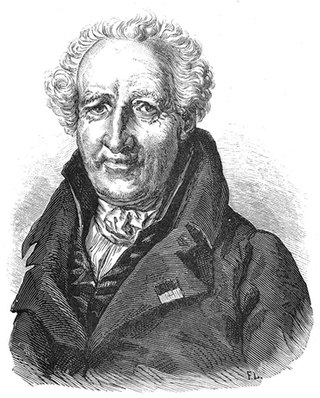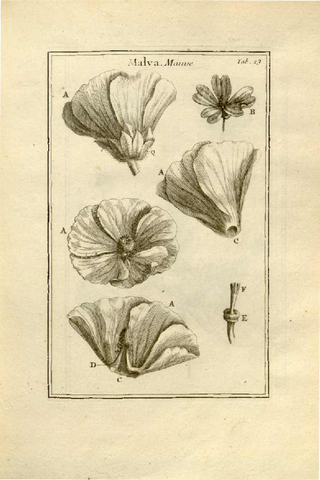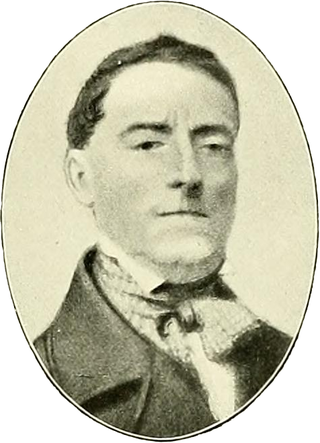
Antoine Laurent de Jussieu was a French botanist, notable as the first to publish a natural classification of flowering plants; much of his system remains in use today. His classification was based on an extended unpublished work by his uncle, the botanist Bernard de Jussieu.

The Jardin des plantes, also known as the Jardin des plantes de Paris when distinguished from other jardins des plantes in other cities, is the main botanical garden in France. The term Jardin des plantes is the official name in the present day, but it is in fact an elliptical form of Jardin royal des plantes médicinales, which is related to the original purpose of the garden back in the 17th century.

Augustin Pyramusde Candolle was a Swiss botanist. René Louiche Desfontaines launched de Candolle's botanical career by recommending him at a herbarium. Within a couple of years de Candolle had established a new genus, and he went on to document hundreds of plant families and create a new natural plant classification system. Although de Candolle's main focus was botany, he also contributed to related fields such as phytogeography, agronomy, paleontology, medical botany, and economic botany.

Bernard de Jussieu was a French naturalist, younger brother of Antoine de Jussieu.
Antoine de Jussieu was a French naturalist, botanist, and physician. The standard author abbreviation Ant.Juss. is used to indicate this person as the author when citing a botanical name.

Jussieu is a station on lines 7 and 10 of the Paris Métro in the eastern part of the Latin Quarter in the 5th arrondissement.

The French National Museum of Natural History, known in French as the Muséum national d'histoire naturelle, is the national natural history museum of France and a grand établissement of higher education part of Sorbonne Universities. The main museum, with four galleries, is located in Paris, France, within the Jardin des Plantes on the left bank of the River Seine. It was formally founded in 1793, during the French Revolution, but was begun even earlier in 1635 as the royal garden of medicinal plants. The museum now has 14 sites throughout France.

Adrien-Henri de Jussieu was a French botanist.

Louis-Guillaume Le Monnier was a French natural scientist and contributor to the Encyclopédie ou Dictionnaire raisonné des sciences, des arts et des métiers.
De Jussieu, the name of a French family which came into prominence towards the close of the sixteenth century, and was known for a century and a half for the botanists it produced. The following are its more eminent members:

Guy de La Brosse, was a French botanist, medical doctor, and pharmacist. A physician to King Louis XIII of France, he is also notable for the creation of a major botanical garden of medicinal herbs, which was commissioned by the king. This garden, the Jardin des Plantes was the first botanical garden in Paris, and the second in France.

Joseph Pitton de Tournefort was a French botanist, notable as the first to make a clear definition of the concept of genus for plants. Botanist Charles Plumier was his pupil and accompanied him on his voyages.

Madeleine Françoise Basseporte, was a French painter. From 1741 until her death, she served as the Royal Painter for the King's Garden and Cabinet, an unprecedented appointment for a woman artist at the time.

Pierre Nicolas Le Chéron d'Incarville was a French Jesuit and amateur botanist. He was a missionary to China and was the first person to introduce several important plants to the West. During his stay, he was also actively involved in publishing scholarly material on China.

Claude Aubriet was a French illustrator and botanical artist. The standard author abbreviation Aubriet is used to indicate this person as the author when citing a botanical name.

Étienne Pierre Ventenat was a French botanist born in Limoges. He was the brother of naturalist Louis Ventenat (1765–1794).

Édouard Spach was a French botanist. The standard author abbreviation Spach is used to indicate this person as the author when citing a botanical name.
Élisabeth Julienne Pommereul was a French botanist who worked under the teachings of the French botanist Tournefort and Swedish botanist Linnaeus to study classifications and counts of grass types in the Jardin du Roi.
This page is based on this
Wikipedia article Text is available under the
CC BY-SA 4.0 license; additional terms may apply.
Images, videos and audio are available under their respective licenses.













